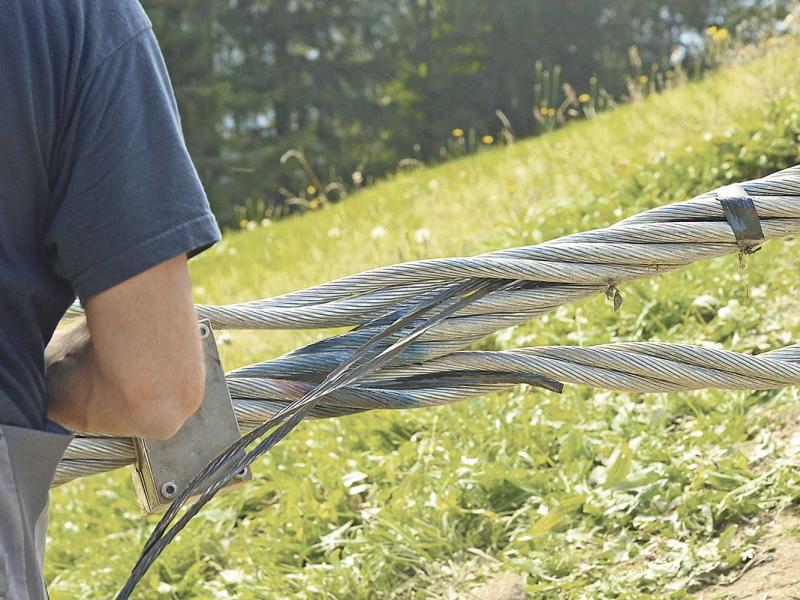Eggli: Splicing steel cables
24.09.2019 Local NewsAnyone who’s ever tried to perform needlework with four strands of wool knows the high level of concentration that’s needed to avoid getting into a muddle. The same applied when workers were busy with the cable splicing for the new Eggli gondola lift – only the individual threads each comprised 6 x 36 interwoven wire strands and were far heavier than a ball of wool.
What happens during splicing?
In rope splicing, the two rope ends are connected to create an endless circular rope without a knot or visible unevenness after the connection process. An employee from the cable manufacturer Teufelberger led the BDG team on site, assisted by technicians from the Swiss cable car manufacturer, Bartholet.
The splice ensures a secure and even connection of both ends of the rope and is 62 metres in length. The winding cable consists of six strands, each made up of 36 wires, twisted into a wire rope with a 52mm diametre. The strands run around the core, the centre of the rope, which is made of hard plastic in this case. Plastic bands are used too to prevent friction between the strands.
Two ends vanish into the rope
With the rope gathered and fed through the pulleys on one side of the pole, the two open ends are laid on the ground. The rope already has a tremendous pulling power due to its weight and then has special clamping devices fixed to the beginning and end of the splice. These are tightened to minimise the tensile force on this section.
Subsequently, three strands from the two ends are cut using an angle grinder at precise points and pulled out. Strands from the opposite end are then fed into their place and manually wound and twisted around the core of the rope. So, what happens to the ends of the strands? These are pushed back into the centre of the rope to form a shorter rope section and a self-contained inner piece. Experts call these "knots", but they aren't visible. Since six strands are needed for the splice, six of these "knots" are distributed over the entire splice.
Although this sounds so simple, it requires hard physical work. The rope, which must be 3000 meters long to cover the distance between the valley station and the mountain station on the Eggli, weighs no less than 30 tonnes. This equals the weight of 30 standard-class passenger cars and explains the efforts and hard graft of the 14-member strong splicing team.
Based on AvS/Jenny Sterchi
Translated by Justine Hewson




